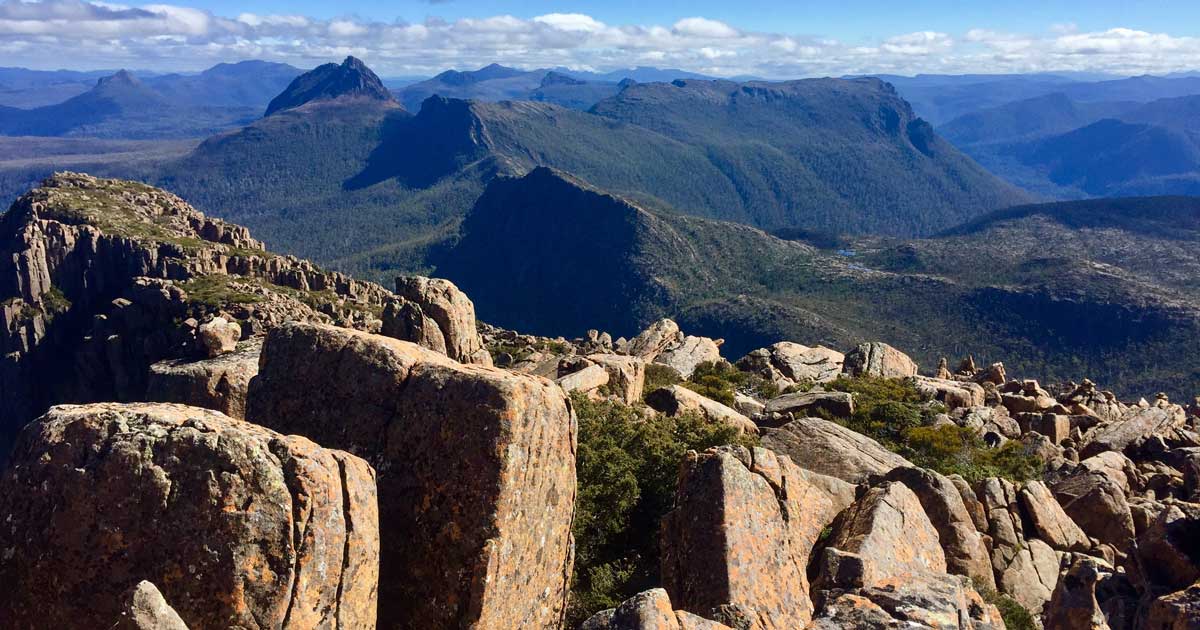Source: The Australian
5 May 2018
A mounting backlash to Tasmania’s green tourism boom has prompted warnings that cruise ship access and charter flights will have to be limited and charges for visiting national parks hiked.
Overseas tourism has increased 18 per cent a year to make Tasmania the nation’s fastest-growing tourist destination.
The state’s visitor surge has created a $2.33 billion industry, driving economic recovery in what was not that long ago considered a mendicant state.
It is also fuelling development in sensitive areas, exposing inadequate infrastructure, creating a rental crisis and changing the nature of small communities.
Veteran conservationist and former Greens leader Bob Brown is among those claiming unfettered tourism and “green shoe” developers have come to rival logging as a key threat to Tasmania’s wild places.
“It’s already there, and there is a huge risk of tourism becoming a focus of national and international opprobrium, because (Premier Will) Hodgman has said to developers ‘Come into the world heritage area and name where you want to go’,” Dr Brown said.
The backlash extends from Hobart, where there is strong opposition to cable car and skyscraper proposals, to the wilderness, where luxury huts or helipads are proposed for the South West and Walls of Jerusalem national parks.
There has been criticism of a widely lauded new public hut opened in recent weeks at Lake Tahune, near Frenchmans Cap in the Tasmanian Wilderness World Heritage Area.
Partly funded with a donation from entrepreneur Dick Smith, the beautifully designed hut is seen by some hardcore bushwalkers as too slick for a wilderness experience, featuring as it does electric lighting and heating, fuelled by a micro hydroelectric system in a nearby stream.
Favourite holiday spots on the east coast and Bruny Island are at times swamped with tourists, while accommodation prices have soared beyond the capacity of many Tasmanians. Widespread adoption of Airbnb to meet visitor demand has sparked a Hobart rental shortage and changed the fabric of small towns and shack communities.
The push-back has seen a proliferation of “Keep Tassie Wild” bumper stickers, created by artist Josh Pringle. “Our national parks are bombarded with development proposals that threaten to destroy what is so wonderful about them,” he said.
While dismissing some of the backlash as deep-green ideology, Tourism Industry Council Tasmania chief Luke Martin acknowledged genuine concerns in some communities.
He said a new long-term industry plan post-2021 was needed, as well as “courage” to limit cruise ship visits and mooted Asian charter flights, and to charge visitors more than locals to enter national parks.
“There are pressure points all across the state and there are opportunities for investment,” he said. “The intent and will is there to manage it. The structure is there to manage it. The challenge remains resources.”
Mr Hodgman, the Tourism Minister, said: “We must protect what’s special about Tasmania — strike the right balance (over) having a thriving visitor economy that doesn’t destroy the very experience that brings people here in the first place.
“There are growing pains as our industry continues to record remarkable growth, and we will not be complacent.
“Every area of government, from tourism to parks to infrastructure … together with industry, is in lock-step to futureproof Tasmania’s tourism industry and our state more broadly.”
The government is targeting an increase in visitors from 1.2 million a year to 1.5 million by 2020 in what Dr Brown described as a “crazy … Disneyland” approach. Overseas tourism has nearly doubled in five years despite the state lacking direct international flights, which are expected soon.
In Binalong Bay, on the east coast, local ratepayer and environment groups are fighting plans to scupper a former navy ship, HMAS Darwin, in the pristine waters of Skeleton Bay.
“We don’t support this kind of fake, theme-park-type tourism approach,” said Todd Dudley, president of the North East Bioregional Network.
“This is already a beautiful natural area and that’s what attracts people.”
Dive business owner and scuppering proponent Peter Paulsen has support from state and local government and says there would be only positive impacts from the creation of an artificial reef.
Matthew Denholm | Tasmania Correspondent





